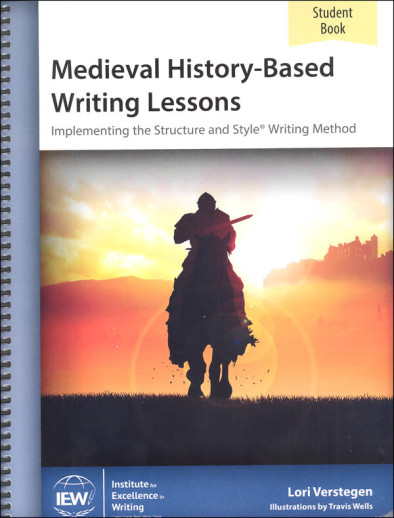We use cookies to make your experience better. To comply with the new e-Privacy directive, we need to ask for your consent to set the cookies. Learn more.
Medieval History-Based Writing Lessons Student Book
The student component only of the Medieval History Based Writing Lessons course, this resource contains student assignments for the lessons: outlines, source texts, vocabulary and grammar material and more. No teaching information is included, so if you are purchasing for use with one student, you may need the Student & Teacher Set.
Knights, Vikings, kings, and famous men of the Middle Ages come to life as students learn to write with Structure and Style.
From the Anglo-Saxons to the Renaissance, from chivalrous knights to Genghis Khan, students will improve their knowledge of medieval times while learning to write with Structure and Style.
This Student Book includes assignments, blank outlines, source texts, checklists, vocabulary cards, and grammar helps for two levels of studentsbasic and advanced.
This book is designed to be used by an instructor who has been through or is currently viewing the Teaching Writing: Structure and Style video course.
We also sell this book together with the accompanying Teacher's Manual.
This theme-based writing curriculum offers a full year of instruction for students in grades 6 to 8 and is perfect for homeschoolers, homeschool co-ops, tutors, and hybrid schools.
Note: The Student Resource Packet is a necessary component of this course. This supplemental resource is included with your purchase as an e-book for you to download and print. (Please check the copyright page for download information.)
The Student Resource Packet (SRP)* is no longer included with Medieval History-Based Writing Lessons, but all necessary writing tool pages for this course from the 174 page Student Resource Packet are now included in the 17-page Medieval History-Based Writing Tools PDF.


Used in our co-op
It was required for our homeschool co-op class for my 2 kids.
We enjoy the writing classes.
This came highly recommended. IEW in particular has been passionately recommended to me by several people. My child has had multiple changes in schools and I realized that a gap in writing ability has…